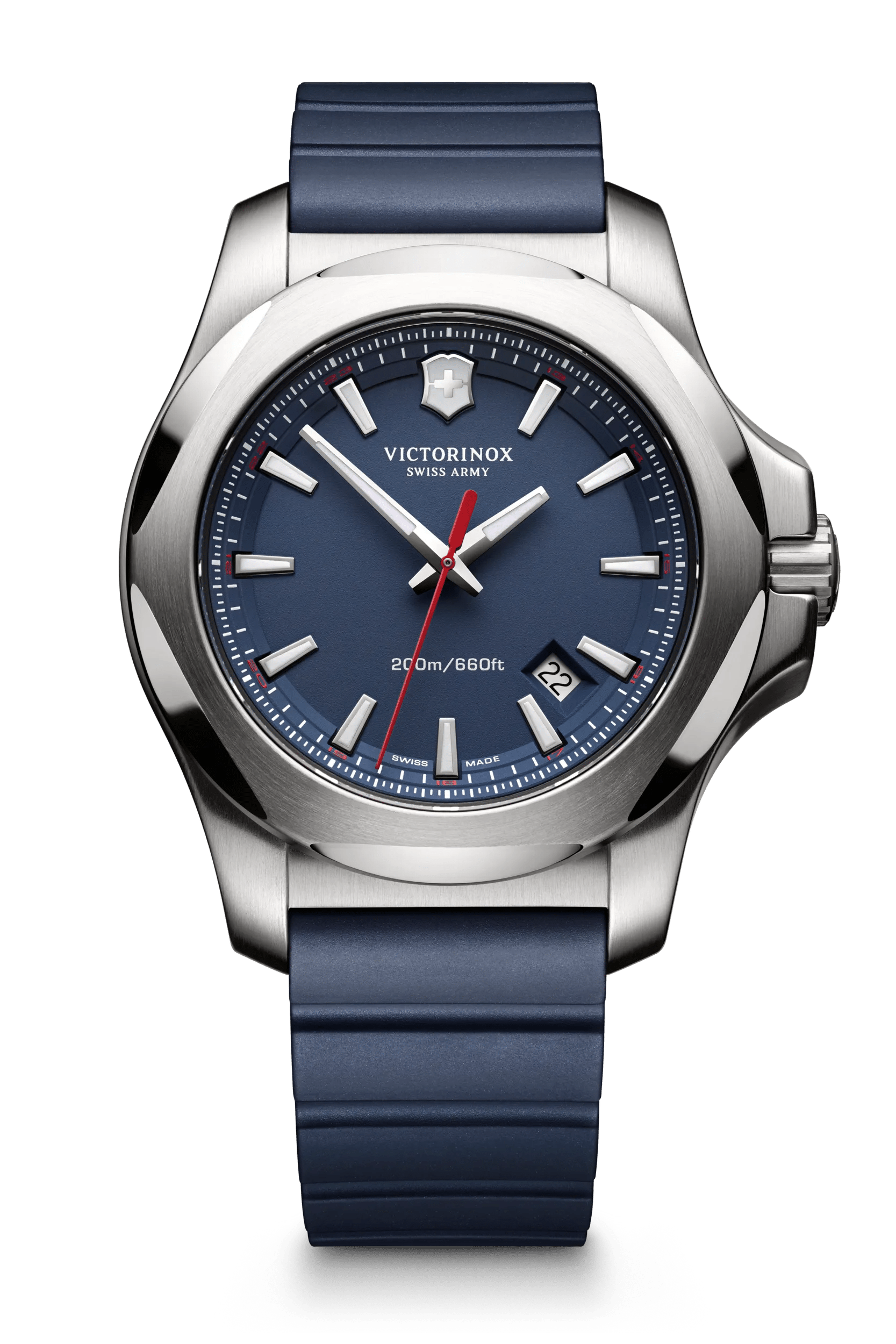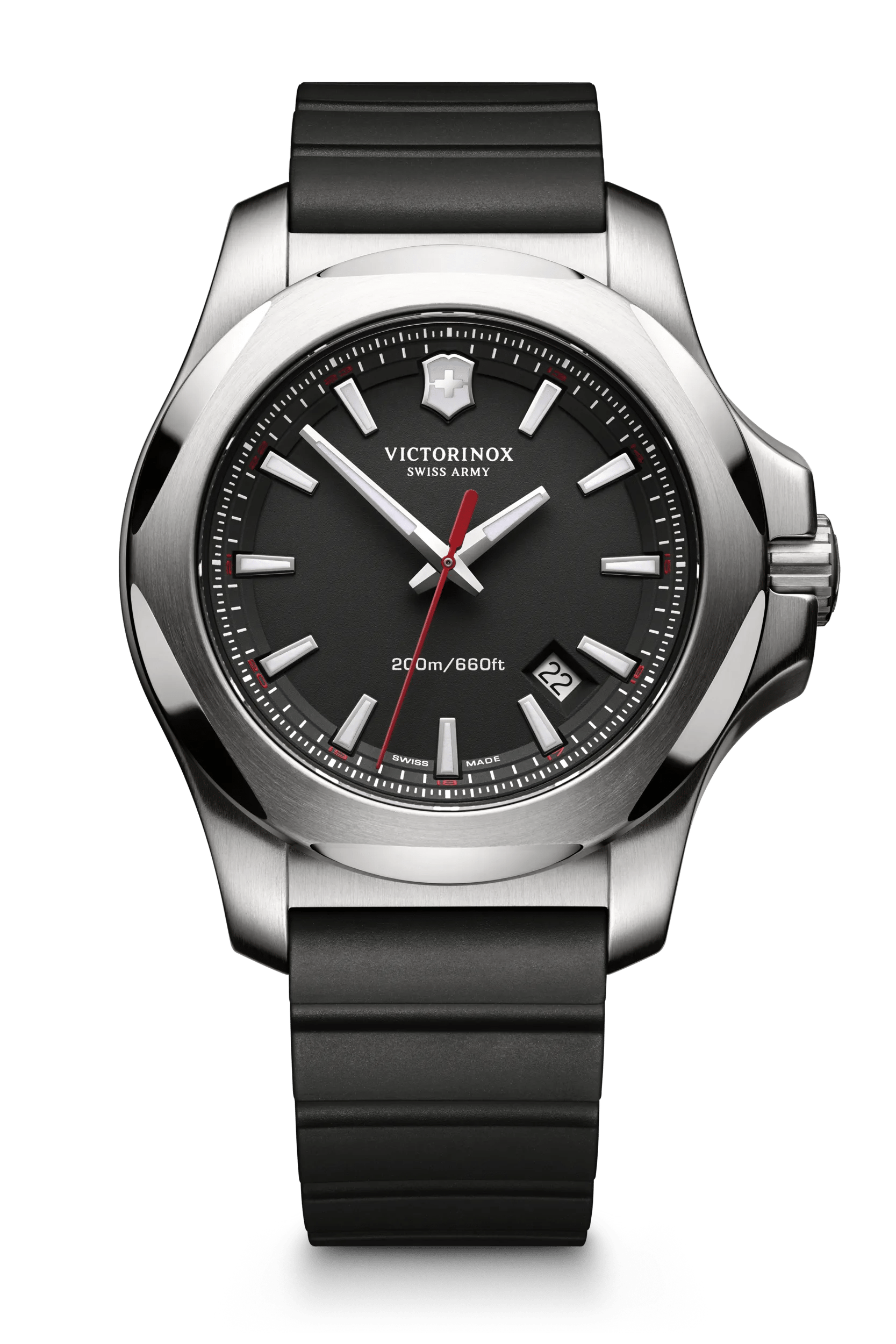L’avenir de l’acier inoxydable
Victorinox et l’ECAL revisitent le matériau de la montre I.N.O.X.
Afin d’explorer les possibilités de l’acier inoxydable dans l’industrie des montres, nous avons demandé à la future génération de designers de proposer leur interprétation de ce matériau traditionnel. Nous avons donc eu le plaisir de collaborer avec l’une des écoles de design les plus réputées et innovantes au monde, la célèbre École cantonale d’art Lausanne, l’ECAL. Des étudiants venus du monde entier se sont inspirés de domaines tels que la chirurgie, les nanotechnologies ou la biochimie pour appliquer ces connaissances à l’univers des montres.
Une histoire de tradition et d’innovation
Au fil des années, nous avons acquis une certaine expertise du travail de l’acier inoxydable. Il y a près d’un siècle, nous étions la première entreprise de couteaux au monde à travailler ce matériau. Cette innovation a représenté un tel tournant pour la qualité de nos produits que, en 1921, nous intégrions le nom du métal inoxydable, « inox », au nom de notre marque.
Depuis, l’acier inoxydable est au cœur de nos réalisations. Cette expertise nous a conduits à l’univers des montres. Avec toute cette expérience, il semblait tout naturel de se lancer dans la fabrication de montres. C’est comme ça que la légendaire I.N.O.X. est née, en hommage au matériau qui continue de nous étonner par son ingéniosité.
Rejoignez-nous dans l’exploration des fascinantes possibilités que nous offre l’acier inoxydable.
L’acier inoxydable – 1 matière, 11 innovations
Lorsqu’un faisceau lumineux heurte et est redirigé par une matière réfléchissante, le phénomène crée des caustiques. Comme le reflet dans une piscine. En appliquant une gravure suivant les principes des caustiques de lumière sur la surface d’une montre, on lui donne un aspect presque « magique ». Image : photo prise par un étudiant, Rayform SA
The project was headed up by Alexis Georgacopoulos, Director of ECAL, and Thilo Alex Brunner, Head of Master in Product Design at ECAL. Under their initiative, designer and ECAL professor Alexander Taylor led students from all over the world through a three month project on discovering new possibilities for the use of stainless steel.
What is the future of stainless steel in the watch industry, Alexander Taylor?
Why didn’t you design watches in this project but focused on material?
I believe the students and designers should learn skills enabling them to be multifaceted in approach and work not only with the finished object, working in a way exploring first the ways in which we can work without the parameters of the object. The character of the object and the opportunity to create something new in both terms of aesthetic and production will come from a collaboration with makers and understanding of the designer to tailor the technologies to a particular need. During this process opportunities will inevitably present themselves beyond the original brief. By not focusing on a particular design of a watch it allowed us to let the process really inform and influence the formal outcome.
What makes stainless steel such an interesting material to work with?
It has such a beautiful and highly functional industrial quality, somehow hi-tech yet so familiar! It is a material with the ability to stimulate the senses and is associated with pioneering product / structures and performance. With this project however we illustrated how you can take a material which is so familiar and still propose absolutely new ways in which it can be fabricated or processed.
About Alex Taylor, Awarded British Designer, Professor at ECAL
Partager par e-mail
Succès !
Votre message a été envoyé avec succès.
Erreur !
Une erreur s’est produite lors de l’envoi de votre message. Veuillez réessayer.
Le produit a été ajouté à votre panier


